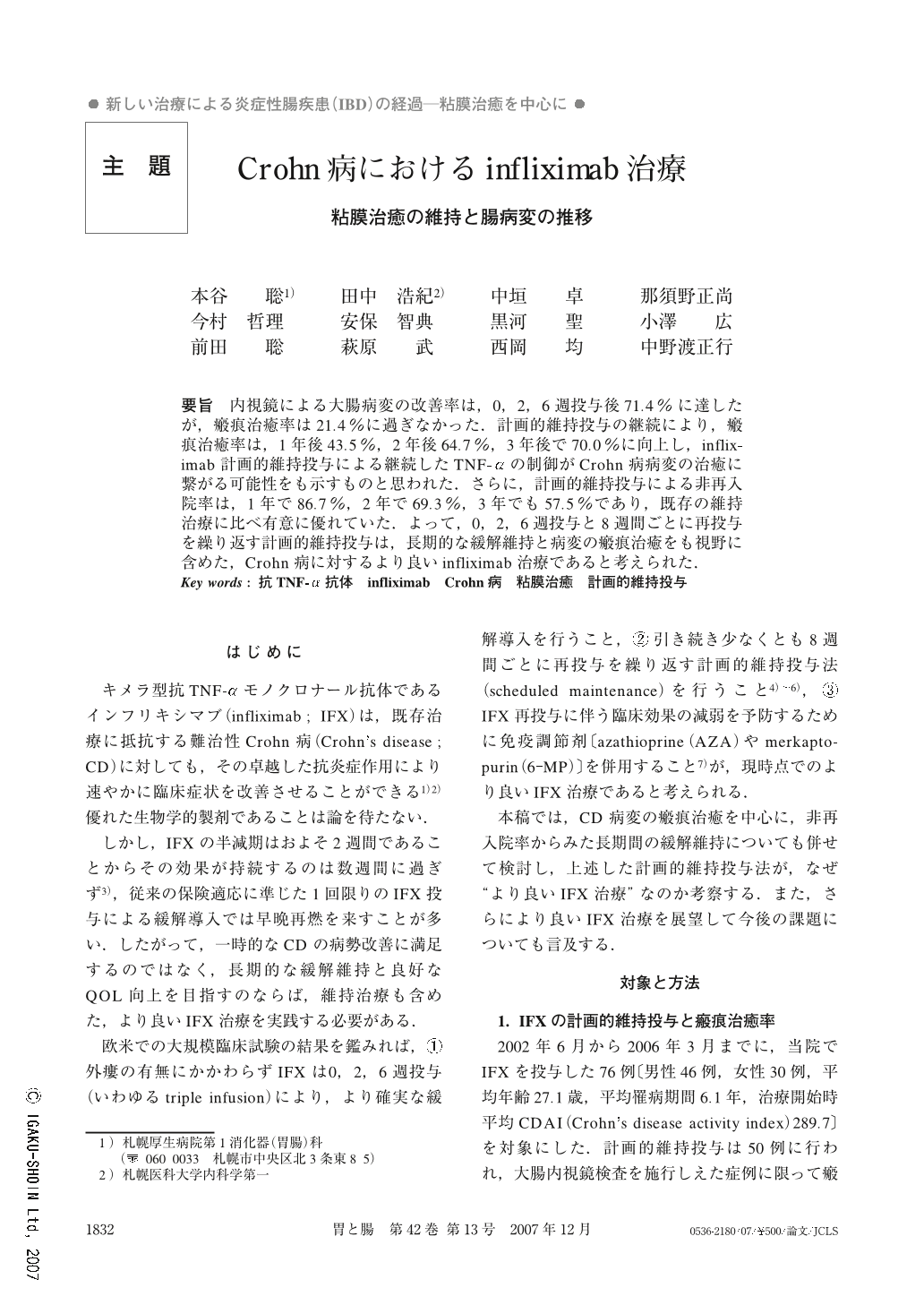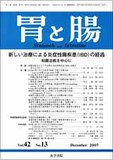Japanese
English
- 有料閲覧
- Abstract 文献概要
- 1ページ目 Look Inside
- 参考文献 Reference
要旨 内視鏡による大腸病変の改善率は,0,2,6週投与後71.4%に達したが,瘢痕治癒率は21.4%に過ぎなかった.計画的維持投与の継続により,瘢痕治癒率は,1年後43.5%,2年後64.7%,3年後で70.0%に向上し,infliximab計画的維持投与による継続したTNF-αの制御がCrohn病病変の治癒に繋がる可能性をも示すものと思われた.さらに,計画的維持投与による非再入院率は,1年で86.7%,2年で69.3%,3年でも57.5%であり,既存の維持治療に比べ有意に優れていた.よって,0,2,6週投与と8週間ごとに再投与を繰り返す計画的維持投与は,長期的な緩解維持と病変の瘢痕治癒をも視野に含めた,Crohn病に対するより良いinfliximab治療であると考えられた.
We investigated mucosal healing rate and rehospitalization rate for patients with Crohn's disease (CD) who underwent scheduled maintenance infusion of infliximab. Scheduled maintenance infusion improved healing rate to 43.5% after 1 year, 64.7% after 2 years, 70.0% after 3 years respectively, in spite of there being initially only a 21.4% healing rate without this scheduled infusion of infliximab. It seemed that continuous regulation of TNF-αled to mucosal healing of active longitudinal ulcers caused by CD. Also, it significantly improved rehospitalization rate compared with that of conventional therapy such as elemental nutrition and immuno-modulators including episodic infusion of infliximab. These results shows scheduled maintenance infusion every 8 weeks following triple initial infusion of infliximab has been an optimizing and successful procedure enabling the maintenance of long-term remission of CD.

Copyright © 2007, Igaku-Shoin Ltd. All rights reserved.


